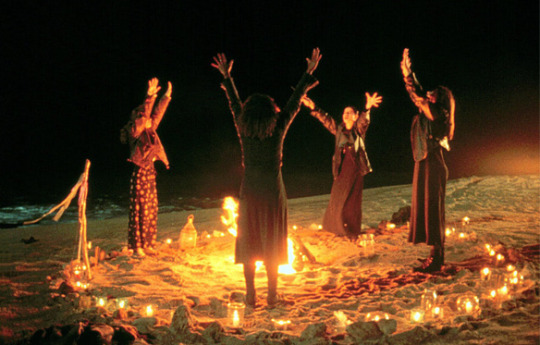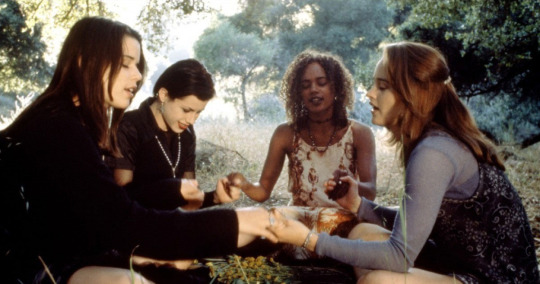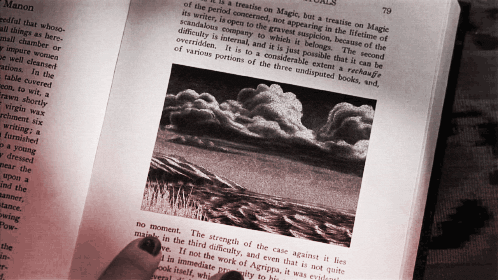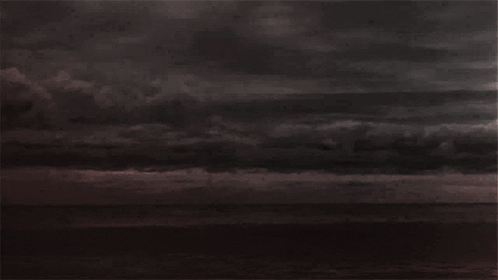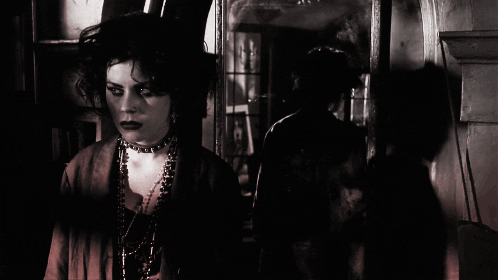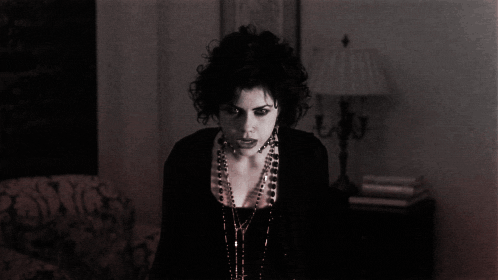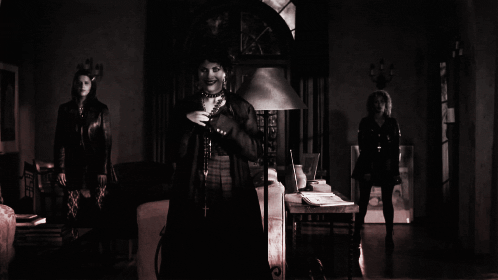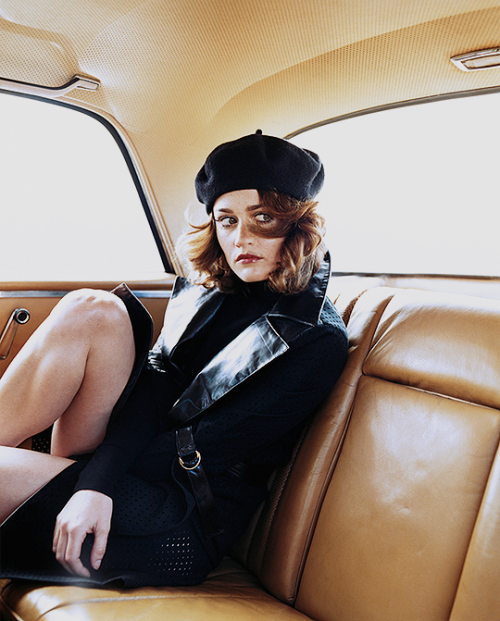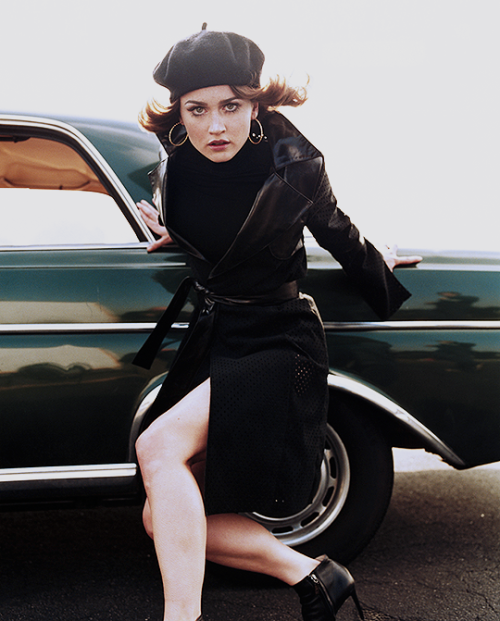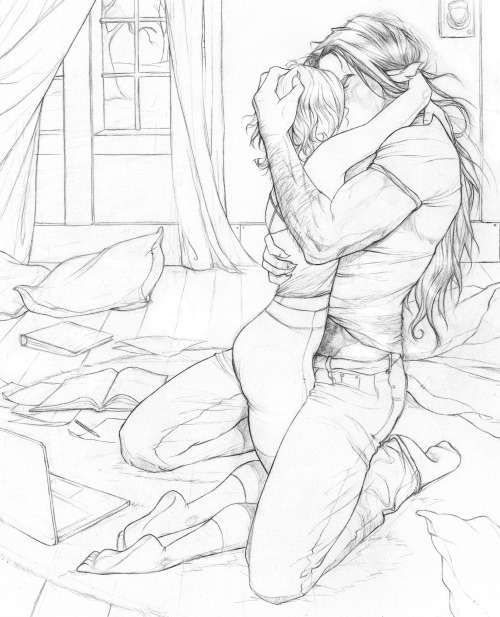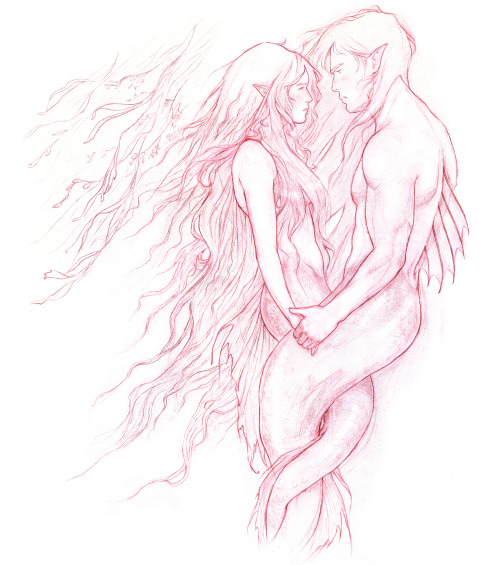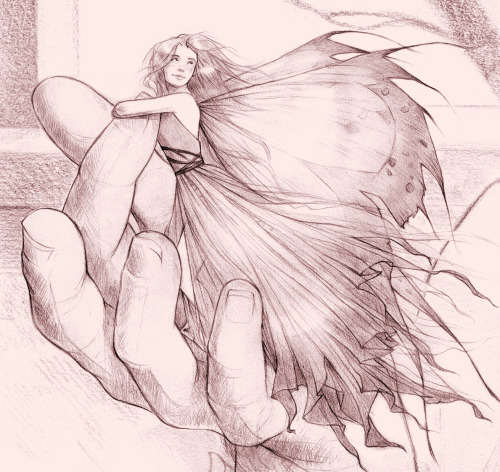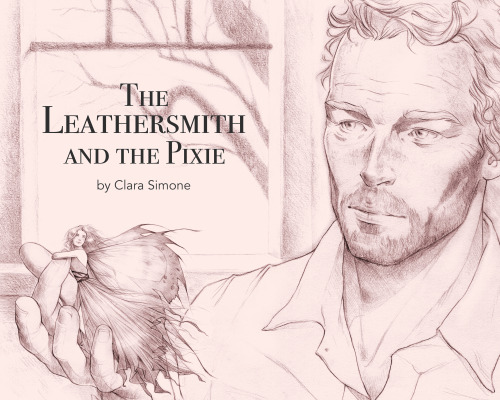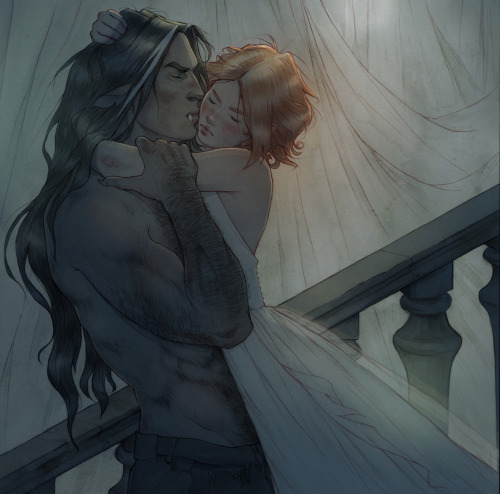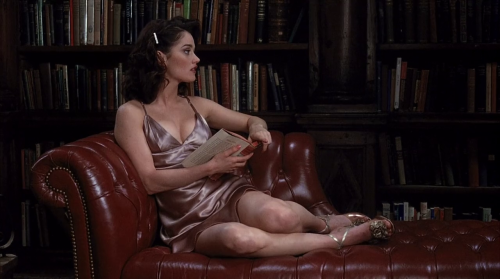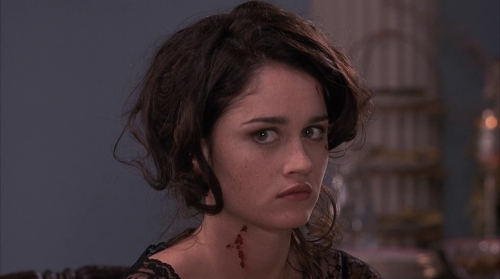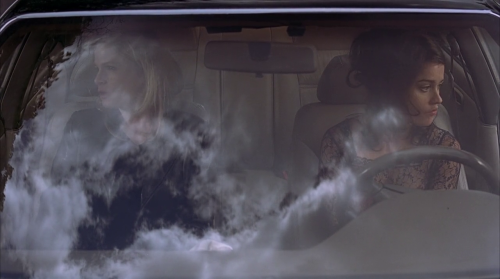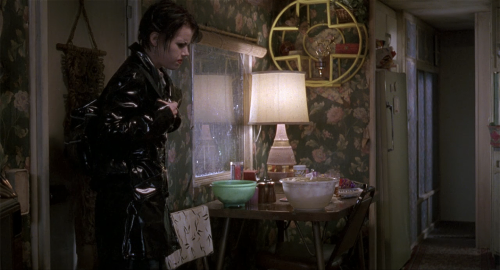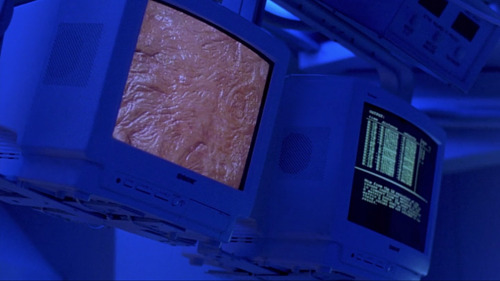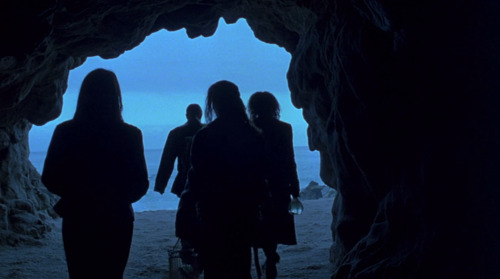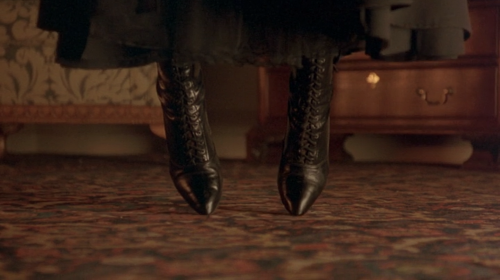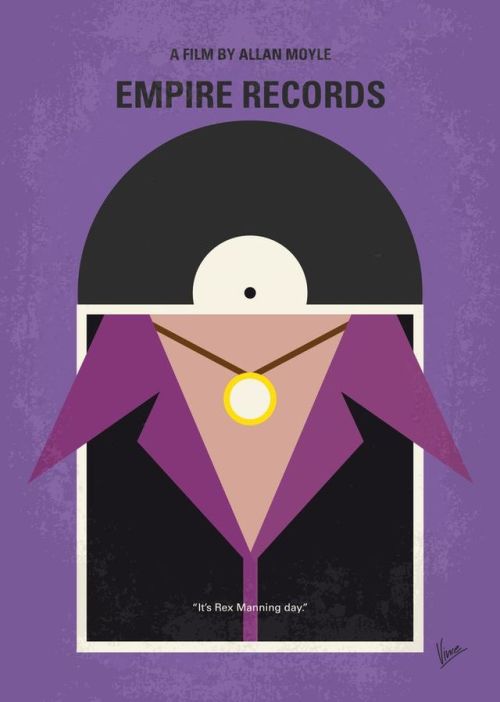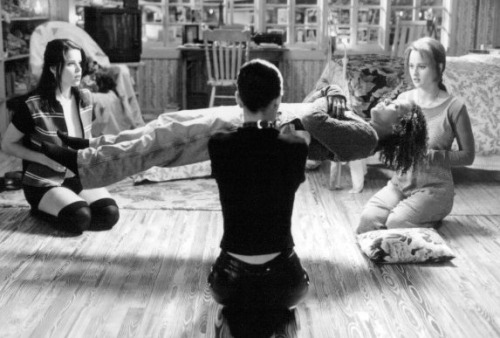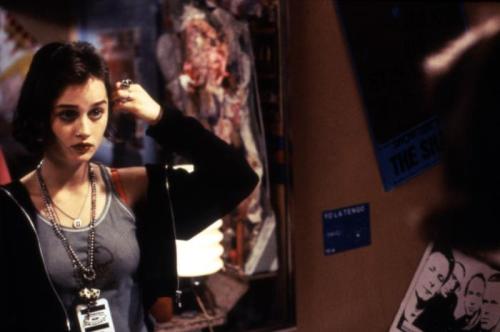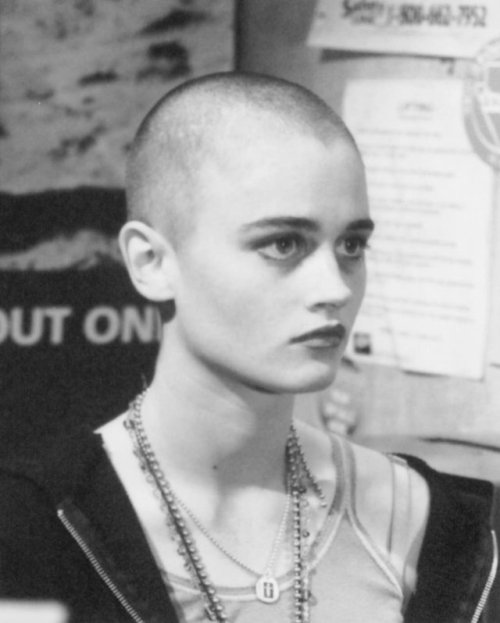#robin tunney
ROBIN TUNNEY photographed by Jonathan Skow.
“Her flattering pose allows us to see some of her legs and it seems very natural for her to strike such poses.” — via WordPress
Post link
On a scale of one to Teresa Lisbon, how sassy are you?










The Craft (1996)
This week onThe Criterinot Podcast: The Craft (1996) - Andrew Fleming
I’m joined by Grammy-nominated music video and short film director David Wilson (Lady Gaga, Arcade Fire, Arctic Monkeys, M83, Tame Impala, Metronomy) to talk with me about Andrew Fleming’s teen witch drama The Craft. The movie was released in 1996 and stars Robin Tunney, Fairuza Balk, Neve Campbell, Rachel True, Skeet Ulrich, and Christine Taylor.
Listen here: LINK
Post link




Sarah bailey - the craft (1997)
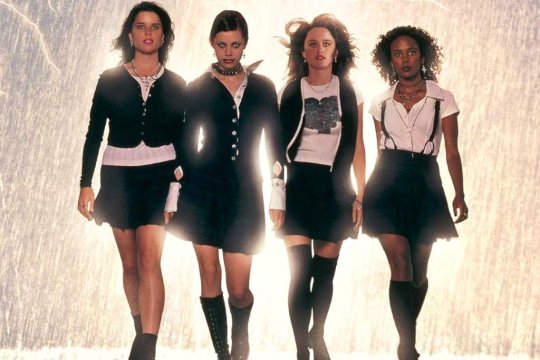
2- Nancy Downs (Fairuza Balk). The Craft (1996).
I can’t tell if I love this movie because it holds a special place of witch nostalgia in my cold black heart, or if its actually a freaking great movie. I try to watch it several times a year, and it keeps just getting better and better. It is unquestioningly one of my all-time favorite movies about witchcraft, and conveys the practices of real witches in a way somewhat unparalleled in cinema. Perhaps this has to do with the fact that the film employed a Dianic Priestess and Information Officer of the Covenant of the Goddess (a multi-denominational Wiccan collective), who sought to couch realness and truths inside a medium she knew would nevertheless have grandiose Hollywood overtones. Or perhaps it has to do with the fact that witch icon Fairuza Balk is cast in an empowering, albeit tragic, character. Either way, The Craft, and Fairuza Balk, fundamentally shaped my witch-identity, and that of an entire generation of young witches, Pagans, and Wiccans alike.
The plot of the movie conveys dozens of classic themes about witchcraft. It begins with a group of social outcasts who reside in the margins of the hallways. They come from diverse backgrounds and various tribulations which have made them feel powerless. On one side, you have Rochelle (Rachel True #40) and her confrontations with racism, prejudice, and bigotry. On another, you have Bonnie (Neve Campbell) and her physical ailments and scars that, especially in high school, are perceived of as grotesque and ugly. On a third side, lies our dear Nancy, her alcoholic mother, abusive stepfather, sexual proclivity, and (as Rochelle puts it), her innate destiny as white trash. The three young girls, feeling powerless in their world, discover witchcraft as a means for gaining confidence, power, and protection. Witchcraft acts as a way to interpret the chaos around them, and can be used as an arbiter of justice against the world that has forsaken them. I get an all encompassing sense of deja vu every time I see the scenes of them walking down the hallways of their school, not just because I’ve seen this movie a trillion times, but because my friends and I were those kids. We all had our problems and difficulties, and together found various forms of witchcraft, ceremonial magic, and other occult traditions as a means to understand the world around us.
You’d think by the length of this post already that we’d be halfway into the movie, but it hasn’t even started yet. While I’ve spoken at length in this series as to the power of three (Charmed #67, the Graeae/Moirai #64, the Weird Sisters #5, et. al), modern witchcraft and most denominations of Wicca continue this ever building strength in numbers to a notion of four-ness. The aforementioned girls, while attempting to practice magic, are held back as their circle in incomplete. Ritual witchcraft often has a Calling of the Corners/Quarters, East, South, West, North, which requires the participation of four practitioners. This is the actual plot of the movie, as the fourth arrives as another ostracized woman. Sarah Bailey (Robin Tunney) transfers in to the school. As if being a new kid wasn’t tragic enough, her mother has died, and Sarah now struggles with depression and suicide. Sarah is a perfect candidate for a new initiate into witchcraft— she too needs to find strength and order in the world around her.
Now complete, the coven truly begins to explore witchcraft and magic in earnest. Rochelle, as a swimmer and character who is surprisingly malleable and soft-hearted, takes the West—water. Bonnie, who suffers from tragic burn scares and self confidence issues, takes up the South—fire. Sarah, whose magic stems from her mother and hereditary witchcraft, takes up the North—earth. And Nancy, crazy, crazy Nancy, whose own imagination is her only limit, takes up the East—air. Together, the girls perform some of my favorite cinematic interpretations of actual magic. The classic “we are the weirdos” forest scene (“In perfect love, in perfect trust”), as well as the notorious beach invocation scene, are truly unrivaled interpretations of actual witchcraft and Wiccan rituals.
There are dozens of undercurrents of classic witch themes throughout this movie. The juxtaposition between natural, hereditary witches like Sarah, and learned occultists like Nancy, illustrates the differences in witch-lore between magic/power being innate versus acquired. While both are true (magic can be both natural and learned), this tension between those with magic and those who learn magic is reminiscent of a kind of Promethean battle for power and strength—who can steal the fire first. In the case with Sarah and Nancy, the hereditary witch ultimately wins (ugh they usually do). However, this is not due to increased ability or a genetic superiority/predisposition to magic. Instead, Sarah becomes the victor due to purity of heart and intent. The movie is wrought with the philosophy that magic is neither good nor bad, it is the intent and the person who can manipulate magic in either direction. As the bomb-ass witch in the occult shop, Lirio, puts it—Nancy takes it to a dark place.
I could certainly do a post on Sarah, and perhaps that could come after this 100. She is a great representation of a witch, from the strength of her mother to her defeating her own sisters who have turned on her. Sarah’s magic is some of the strongest we see, most notably her final binding of Nancy. In another great representation of Sympathetic Magic, we see Sarah perform a magical binding to prevent Nancy from doing harm to others or herself. By wrapping a ribbon around an image of Nancy while repeating the mantra, Sarah hopes to stop Nancy from her (self) destructive behavior. Sarah repeats the binding in their final fight scene, and in a moment of script writing brilliance, Nancy is thus fated to being truly bound to a bed in a psychiatric ward at the end of the movie. Unfortunately Nancy becomes institutionalized as she’s flown too close to the sun, but she is unquestioningly unable to do harm to anyone while in that padded room.
So, WHY NANCY? As a character, she is one of the most bad ass witches I can think of. Despite her flaws, she has a strong sense of morality and is fiercely protective of her sisters. She uses witchcraft to punish a sexual predator (….full transparency here, she kills him…) and sees power as a means of uplifting both herself and others. Her tragic flaw comes in her full and total submission to her religious philosophy (Minnie Castavet #19 and Bellatrix Lestrange #15). She is unfortunately unable to control herself once she realizes her full power, as she has invoked all the power of Manon*. Nancy illustrates the journey of many witches, from disenfranchised outcast, to an empowered and autonomous woman, to, yet again, a woman suffering from a mental health crisis. Solidifying The Craft in its explication of witch archetypes, Nancy conveys the long history of witchcraft in a single character.
BUT FAIRUZA?!
I can’t think of another actor who has done as much for witch-lore as Fairuza Balk. In addition to her role in The Craft, Fairuza has appeared as Dorothy Gale in Return to Oz (1985, mentioned with Mombi #48), as Mildred Hubble in The Worst Witch, as well as dozens of other, non witch related roles. Fairuza’s mother studied Egyptian, Turkish, and Moroccan traditional dance, and her father is allegedly of Romani and Cherokee ancestry. Fairuza has been acting since she was a young girl, and continues her career as a musician and artist. A quick visit to her website reveals that she sells and designs custom sigils, symbols which are imbued with certain magical principles. In many ways reminiscent of witch-icon Stevie Nicks (#59), rumors have been circulating as to whether or not Fairuza is a practicing witch for decades. It didn’t help when stories circulated about the Dianic expert allegedly initiating one of the cast members of the film, or when Fairuza herself purchased an occult shop in L.A. She has stated that she first learned about witchcraft through The Craft, as so many of us in my generation have. Whether or not she’s out of the broom closet is besides the point. Fairuza remains one of my all time witch-icons, and I am greatly indebted to her for her work in furthering the tradition.
*Manon is perhaps one of my favorite parts of the movie. Due to the fact that the actors were performing actual Wiccan rituals, they were advised against using the name of an actual existent deity. Instead, Manon was created to prevent any actual invocation from occurring, especially by young fans wanting to mimic the film. Good thing too, because the aforementioned beach scene invocation resulted in swarms of bats, crashing waves extinguishing the candles in the scene, and a total loss of power on the set. No joke—that all actually happened. The description of Manon, too, as the Stadium and Field on which God and the Devil play football, is beautifully illustrative of much of Pagan theology.
